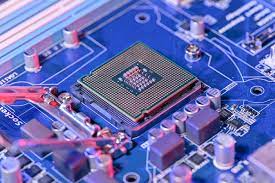The Federal Department of Information Technology has made great strides over the past few decades to better service its modules, adopting new technologies that improve service efficiency and reliability. But much still remains to be done. Several factors are driving digital government transformation efforts, and telecommunications and telecommunications services have accelerated their impact over the past year and a half.
Here are five trends that are affecting network modernization efforts across government as federal companies begin to emerge from the pandemic.
1. More Telecom
Over the past year and a half, we’ve learned a lot about how technology drives remote working and collaboration. New developments and innovations allow us all to achieve more than is possible. We saw how the private sector will change in 2020 with new approaches like curbside pickup and combined video conferencing. In addition, to government agencies, service delivery was previously defined by the authorities and relied on practices that depended on traditional methods. We found that remote working can work. This perspective will require changes in how the government connects, manages and supports new “agency” agencies (i.e. homes of civil servants). Will remote government employees be their help centers? How will this affect their productivity and ultimately service delivery? How can they work together if their service provider tells them their replacement router will be due in three days?
2. Carriers against service providers?
Enterprise Infrastructure Solutions (EIS) contracts have been awarded to non-traditional telecommunications carriers for the first time in the long network services history of managing public services. The agency’s decision to diversify network vendor types will bring new services, more options and better solutions to a competitive market. More competition will be beneficial for the agencies.
3. Load Selection
In contrast, the EIS project presents several challenges by integrating nine award-winning companies. The government initially awarded GSA network service contracts to two or three vendors or a maximum of five. The agencies are now submitting nine competitive bids in response to each “reasonable opportunity” request. Do the math: nine proposals, nine reviews, nine talks and eight prize protests. This process puts pressure on agency employees responsible for running their existing networks together. In the meantime, tick the clock change deadline. These rewards will last a long time. Transition does not reduce this excessive “choice burden”.
4. Like
The EIS RFP was released during FTS 2001 when services became available and when networks contracted existing technologies. When the EIS was created, the use of new broadband services did not meet the federal government’s required network security requirements. As a result, the legitimate opportunities offered in the early days defined the company’s continued tradition or “like-a-like” services such as MPLS and relied on measurable or effective costly access services that are measurable in today’s environment. This system does not provide the transformation and network transformation required for efficient government service delivery. However, GSA has worked to integrate broadband and managed limited broadband network (SD-WAN) technologies into the EIS primary agreement, as broadband services are integrated. This, in turn, hinders the fulfillment of the unfortunate time lag change goals.
5. AIOPS
With the development of artificial intelligence (AI) as part of network operations, the management and performance of scattered networks has taken a major step forward. As this performance optimization technology continues to evolve, the industry is approaching service delivery sites that integrate automation, analytics, and customer experience management. AIOps is an important addition to SD-WAN services now managed under EIS and other agreements, as it improves service quality and reduces client idle time. Machine learning models can fuel the explosion of data available in the cloud, billions of devices and the Internet, and advance use of AI for network management tasks. It promotes cloud-based services, multiple hybrid environments, migration services and SD-WAN technologies. While streamlining AI network management, it improves performance and user experience, creating better networks and better management. This will have a profound impact on the growing hybrid office/home office ranking of the agency network.
The trends create a perfect storm, which will prompt the government to immediately reach out to citizens in the next phase of modernization. As citizens become increasingly digitally dependent, the government will rely on the changing EIS contract model, AIOPS and the telecommunications changes that evolve with them.
If there has been a similar thread over the past year and a half, it is a dramatic change: a global pandemic amid records of impending political and social division, domestic unrest, extreme temperatures and inclement weather.
These disasters have all led to major changes. Conducting brick-and-mortar processes using new methods to support clients, from collaborating with the state and health care and vaccination appointments to remote employment to manage the spread of government-19. Technology facilitates motor, feedback and management in a digital environment. Difficulty.
While we’ve certainly learned a lot over the past 18 months, how do they work?



